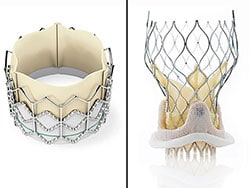In celebration of Medscape's 25th birthday, we are reposting this article reviewing the state of cardiology during our founding year. The article was written in 2015 for our 20th anniversary. Use the comments section to share your thoughts on the advances in cardiology over the past 25 years.
The Golden Era of Innovation
In 1995, Bill Clinton was President, Newt Gingrich was TIME magazine's man of the year, and interventional cardiology was in its infancy. We perused the cardiovascular literature from 1995 and canvassed some experts by email for their reflections on the time and how far the field has come
Cardiologists were grappling with many of the same issues that perplex today's doctors albeit with earlier iterations of devices and drugs — angioplasty vs surgery, evolving stent designs, who should get statins, to name a few. A presentation at the American Heart Association (AHA) meeting in 1995 was titled "Acute Coronary Syndromes (ACS): Is It Safe to Stent?"
E. Magnus Ohman, MD (Duke Medical Center, Durham, North Carolina) observed that "The 1990s was a golden era of innovation and investigation for ACS. Since then we have mostly fine-tuned the field." Gregg Stone, MD (Columbia University Medical Center, New York; now at Icahn School of Medicine at Mount Sinai) remarked that "the advances we've seen in technology, technique, imaging, and pharmacotherapy have been nothing short of amazing".
"It has been an amazing 20 years," agreed Steven Nissen, MD (Cleveland Clinic, Cleveland, Ohio), adding that "mortality rates have steadily fallen with widespread usage of primary and secondary prevention strategies."
Flashback: Restenosis and the Evolving Stent
When Tom Hanks took home the Best Actor Oscar for Forrest Gump, it was still the thrombolytic era and balloon-only angioplasty was bedeviled by rates of restenosis of over 40%. High-dose angiotensin-converting enzyme (ACE) inhibition was among the latest strategies to fail to tackle this vexing issue following disappointing findings in trials on somatostatin analogues and omega-3 fatty acids. The best hope for adjunctive pharmacology was a monoclonal antibody Fab fragment directed against the platelet glycoprotein IIb/IIIa integrin after the publication of the EPIC trial in 1994.

Tom Hanks as Forrest Gump
Stenting had been shown to reduce restenosis rates but was hampered by higher vascular complication rates as devices and techniques evolved. Stone remembers when the Palmaz-Schatz stent was approved in August 1994, which, in his words, "allowed us to overcome the issues with acute vessel closure, improving the safety of PCI [percutaneous coronary intervention] for patients and effectively kicking the surgeons out of the cath lab."
That said, these stents were quite primitive by modern standards. "They only came in one length, so strategies to cut them in half, or deciding about the use of multiple stents to deal with longer lesions, consumed most of the conversations in the interventional world," recalls Seth Bilazarian, MD (Pentucket Medical Associates, Haverhill, Massachusetts, now vice president of Abiomed), noting that being able to select the right length stent is taken for granted today.
Dual-purpose drug-delivery catheters were also being tested as a means of mitigating restenosis, which in turn led to coating the stent itself with an antithrombotic agent. The BENESTENT II pilot study of a heparin-coated stent was presented that year. Low-dose radiation as a potential remedy for restenosis was being studied in pig models.
Commenting on the advances since then, Melissa Walton-Shirley, MD (Cardiology Associates, Glasgow, Kentucky, now practicing locum tenens) observed, "Thank God for drug-eluting stent platforms that actually work. Restenosis discussions and admissions used to be a huge part of our practice lives."
Angioplasty on the Increase
The same year that Amazon.com sold its first book, the Primary Angioplasty in Myocardial Infarction (PAMI) trial published in the Journal of the American College of Cardiology, comparing balloon angioplasty with thrombolysis, concluded that "the two most powerful determinants of freedom from death, reinfarction and recurrent ischemia after myocardial infarction are young age and treatment by primary angioplasty." Fast-forward 20 years and PAMI lead author Stone reveals that "the dominance of primary PCI for ST-segment elevation myocardial infarction (STEMI), and the institution of primary PCI centers of excellence with national efforts to reduce door-to-balloon times and improve quality metrics and outcomes, have been particularly gratifying."
Ohman remembers "the believers advocating for primary PCI, but it took another 5 years to prove it worked and another 15 years to figure out how to do it well and quickly."
Lytics weren't the only treatment that angioplasty was trying to knock off its perch. The European CABRI study randomly assigned more than 1000 patients with symptomatic coronary artery disease (CAD) to percutaneous transluminal coronary angioplasty (PTCA) or coronary artery bypass graft surgery (CABG) and showed no difference in mortality at 1 year.
A prescient commentary from the editors of Journal Watch in December 1995 remarked that "Despite all the trials under way or completed, a final resolution of the PTCA versus CABG debate may not emerge soon." It was assumed that the advent of stenting and better adjunctive medical therapy (mostly statins back then) would move the needle.
"We were developing an increased appreciation for the importance of adjunct pharmacotherapy. While restenosis certainly hadn't been cured, the confidence level of the interventionalist was skyrocketing," remembers Stone. Nissen recalls the heady days when coronary stenting made PCI easier and, in his mind, "resulted in irrational exuberance. Few voices recommended caution as PCI rates climbed and surpassed rates of CABG. "
"Certainly the demonstration that PCI provides less value to patients with stable CAD than we thought—either for simple disease compared with medical therapy, or complex disease compared with CABG—has been sobering," concedes Stone.
Cholesterol: Enemy Number One
The San Francisco 49ers beat the San Diego Chargers in the highest-scoring Super Bowl to date. Meanwhile, the cholesterol hypothesis was at full strength, bolstered by the publication of the 25-year follow-up of the Seven Countries study which showed that total cholesterol levels were linearly related to CAD mortality. According to the authors, the large difference in absolute CAD mortality rates at a given cholesterol level indicated that other factors, such as diet, are also important in regard to primary prevention.
That same year, the West of Scotland Coronary Prevention Study (WOSCOPS) group presented the first primary prevention trial to show a mortality reduction for a lipid-lowering drug (pravastatin). Writing in the New York Times, Jane Brody noted, "The finding is applicable to at least one-quarter of American men." No women were included in the study. The Scandinavian Simvastatin Survival Study (4S) had been published the year before, showing a mortality benefit for cholesterol lowering in men and women with established CAD.
At that time, "statin usage was reserved for patients with very high levels of LDL-C, but the introduction of atorvastatin in 1997 resulted in an amazing acceleration of statin use as physicians gained confidence in the effectiveness and safety of this class of drugs," reminisced Nissen.
1995 also saw publication of The Regression Growth Evaluation Statin Study (REGRESS), and the concept of lowering LDL-C beyond 100 mg/dL in men with CAD, even when total cholesterol levels are not markedly high, began to take hold. Notably, there were no women in this study either. It would be another 7 years until the unveiling of NHLBI's Heart Truth campaign and adoption of the red dress (Go Red for Women) as a symbol for heart disease awareness in women.
Margarine and Homocysteine
The same year that The Zone Diet was topping the best-seller list, dietary means of lowering lipids were also being investigated. As the WOSCOPS data were presented at AHA and published in The New England Journal of Medicine, so too was a study out of Finland on a margarine containing plant sterols. In a related editorial, Terje Pedersen (Aker Hospital, Oslo, Norway) wrote that "the benefits of reducing cholesterol are now established beyond any reasonable doubt but because statins are expensive it is important to look for alternative methods of lowering cholesterol." At the time, it was estimated to cost $800 a year to treat each person with statins. The Finnish margarine, now sold in almost 30 countries worldwide as Benecol, was shown to lower total and LDL cholesterol in persons with mild hypercholesterolemia.

Benecol margarine
Brad Pitt made his first appearance as People magazine's Sexiest Man Alive at a time when homocysteine was also hot. Data from the Framingham study and others showed a link between elevated plasma homocysteine and atherosclerosis, leading to calls for randomized trials on vitamin B12 and B6 supplementation, and even adding folate fortification of foods as a potential means of preventing CAD. While Brad continues to be a People magazine regular, studies on homocysteine and CVD are rare sightings in the pages of The New England Journal of Medicine these past 15 years.
Formal Exercise Guidelines
1995 saw the release of the Elliptical Fitness Crosstrainer (EFX) by Precor and the publication of the first formal guidelines on physical activity from the Centers for Disease Control and Prevention and the American College of Sports Medicine. "Every US adult should accumulate 30 minutes or more of moderate-intensity physical activity on most, preferably all, days of the week," was the paper's conclusion.

Elliptical trainer circa 1995
Exercise researcher Steven Blair, PED (University of South Carolina, Columbia) recalls, "The original exercise recommendations by the American College of Sports Medicine and other groups tended to focus on vigorous-intensity exercise ... these recommendations gave a lot more attention to the health benefits of moderate-intensity physical activity, such as walking. The report was the start of a trend to include moderate-intensity activity in recommendations."
When asked to evaluate the progress on exercise research since then, Blair pointed out that the first National Physical Activity Plan, released in 2010, includes strategies and tactics for promoting physical activity in eight sectors of society. "We have made progress but still have a long way to go to address what I consider to be the biggest public health problem of the 21st century," he said.
Where Are the Flying Cars?
So, what is cardiology's equivalent to flying cars, an advance many assumed would be available now but isn't? The cardiologists canvassed by Medscape assumed that stem cell research and genetic testing to guide therapy would now be routine; that there would be an injectable medical therapy to stabilize or reduce plaque formation; and that patent foramen ovale (PFO) closure would have panned out as a useful modality for stroke or migraine treatment, or both.

Fictional flying car
Nissen expected HDL-raising drug treatments to have succeeded by now, but he remains optimistic. "I'm not giving up on this approach," he commented, admitting that others have declared the HDL hypothesis dead. Spencer King (Emory University, Atlanta, Georgia) thought the debate regarding PCI vs CABG for stable coronary artery disease would have been over by now.
Interventional cardiologist Bilazarian expected more advances in surgery. "If you had told me in 1995 that we would still be referring patients for CABG for multivessel disease, with very little change in the technique other than endoscopic harvest for saphenous vein grafts and a lower usage of blood products postoperatively, I would not have believed it." When Medscape asked a surgeon to respond, Timothy Gardner (Christiana Care Health System, Newark, Delaware, now semi-retired) defended his turf, noting that cardiac surgeons have refined off-pump CABG and that the increased use of internal mammary grafts and radial grafts facilitate artery-only bypass procedures. "These and numerous others innovations and refinements ... have resulted in continued reductions in surgical mortality and better long-term results, despite surgeons operating on ever older and more complicated patients," he stated.
I Didn't See That Coming
Of the advances that did arrive, which ones would shock a time-traveling cardiologist from 1995? "I would have never anticipated that cardiologists would be successfully replacing the aortic valve in the cardiac catheterization laboratory," remarked Nissen, adding that "the revolution in treatment of structural heart disease has just begun." This was a popular choice among the cardiologists we asked. "If you had told me that we would be implanting aortic valves percutaneously and on the cusp of doing the same for mitral valves, I would have doubted it," admitted King. Gardner and Stone concurred, as did Walton-Shirley, who recalled fantasizing about percutaneous mitral valve work, "but I could never quite get the logistics worked out in my head ... It seems simpler than transcatheter aortic valve replacement now that it's here."

Transcatheter aortic valves
She also cited smaller loop recorders as a fantastic advance. "In 1995 we were doing a lot of signal averaging, which I don't use at all today." Gardner predicts that additional valvular and structural cardiac defects will be treated successfully through endovascular rather than traditional incisional procedures.
Bilazarian is pleasantly surprised to be doing almost all of his coronary cases from the radial approach and would not have predicted that the incidence of major bleeding and significant groin complications would have essentially been eliminated by this approach and limited use of glycoprotein IIb/IIIa's.
Interventional Cardiology Grows Up
In Stone's opinion, much of the reduction in mortality from ischemic heart disease experienced globally over the past two decades can be attributed to the interventional treatment of acute coronary syndromes.
A paper on the current state of angioplasty, published in 1996, included this prediction from author King: "It is unlikely that 5 to 10 years from now interventional cardiology will remain a sideline for cardiologists, but rather it is likely to evolve into its own subspecialty of cardiology, as has electrophysiology." When Medscape reminded him of that comment, King replied, "Interventional cardiology did evolve into a subspecialty, and I served as chair of the interventional cardiology board from its beginning in 1999 to 2009."
Indeed it has come a long way. In January 2015, interventional cardiology was officially recognized as its own specialty by payers, including the Centers for Medicare & Medicaid Services.
No doubt this informal review left out some of your memories of the era. Share your observations on the changes in cardiology over the past 25 years in the comments section below.
© 2015 WebMD, LLC
Any views expressed above are the author's own and do not necessarily reflect the views of WebMD or Medscape.
Cite this: Cardiology 1995: The Rise of Stents and Statins - Medscape - May 27, 2015.











Comments